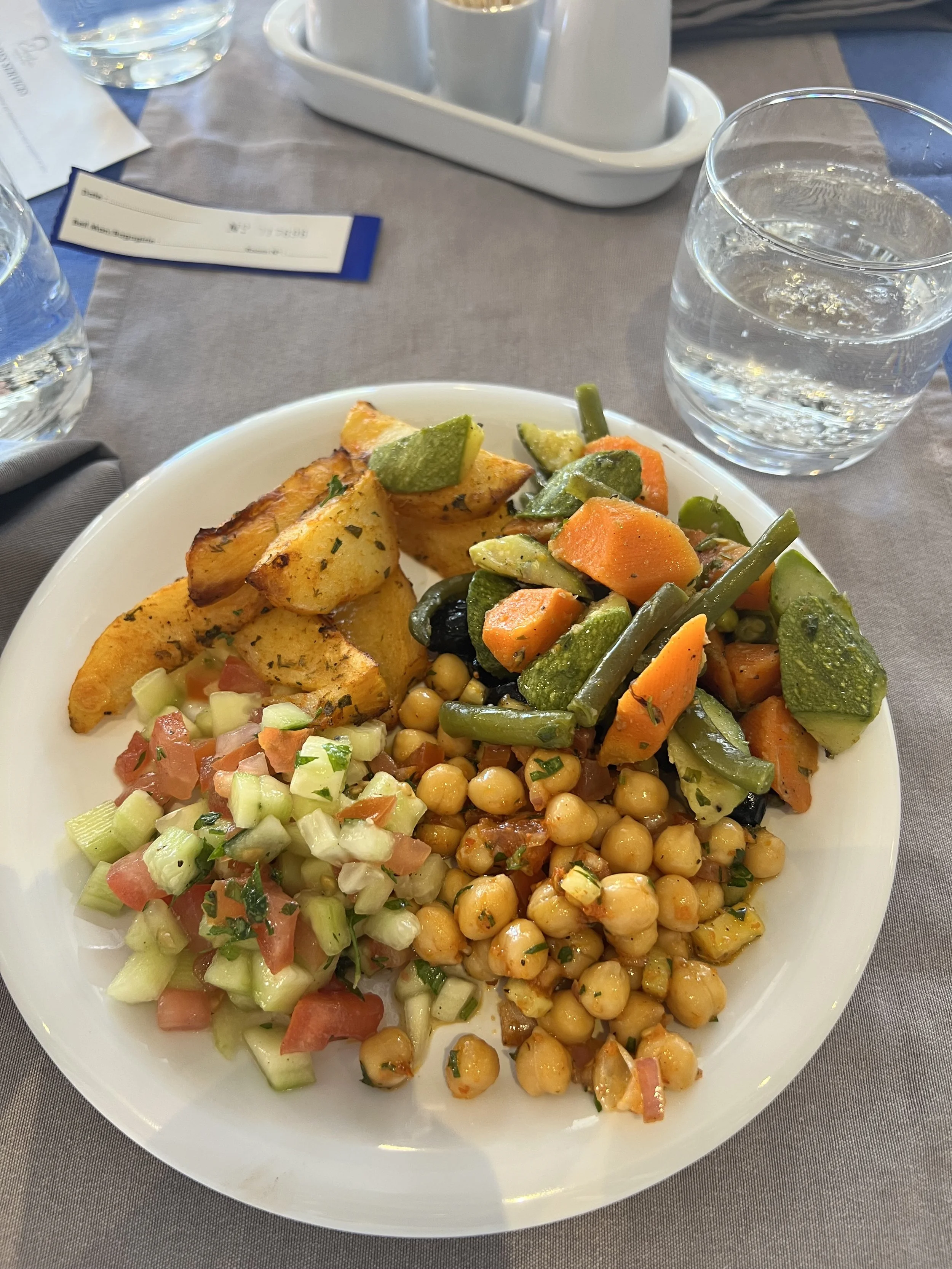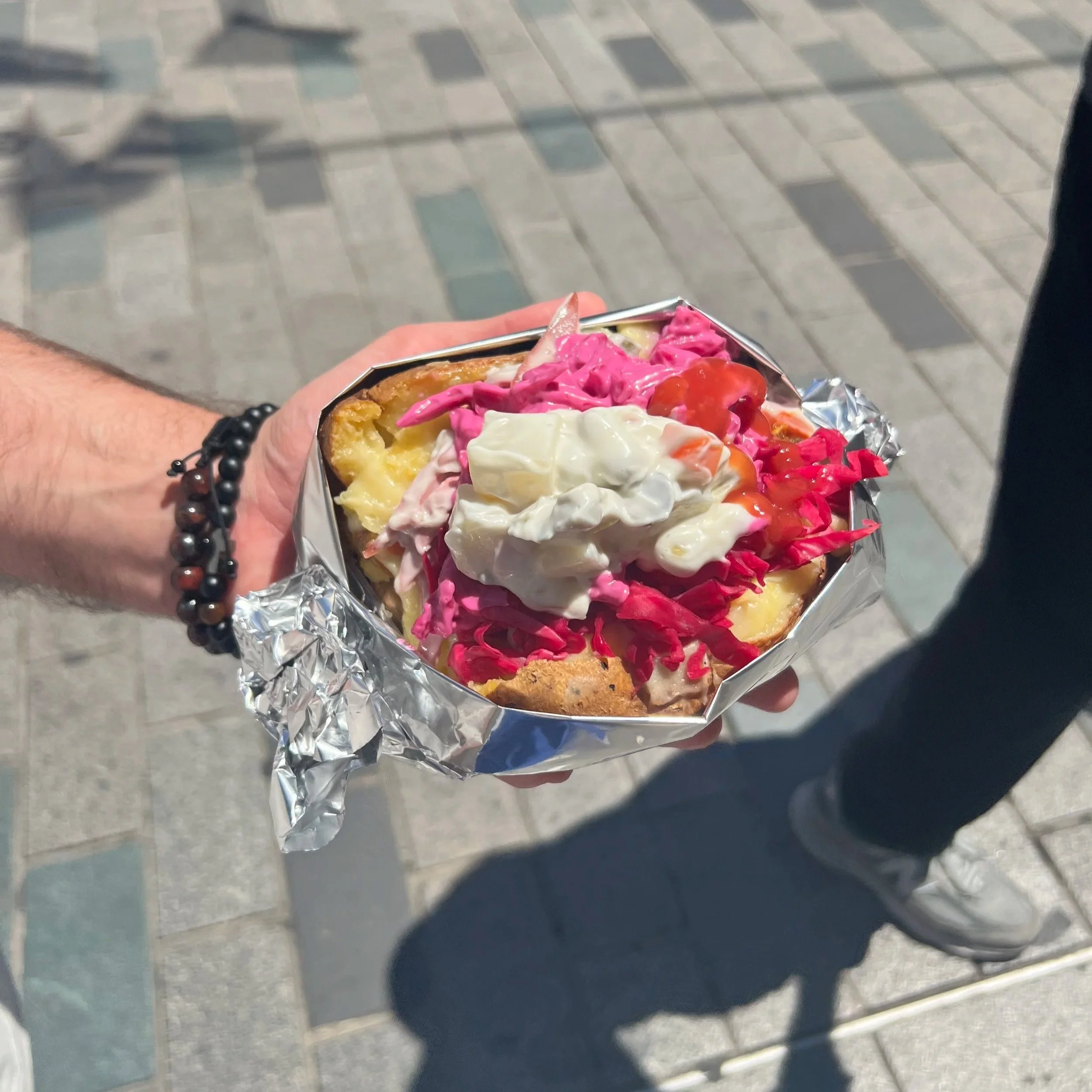Kelsey Eats: Morocco, Turkey and Portugal
By Kelsey Chadwick, MS RDN
August 25th, 2025
If you’ve read my bio on our website, then you know I love to travel! One of the reasons I love traveling so much is because it offers the opportunity to learn something new and experience different cultures and ways of living. One thing in particular I enjoy learning about is the local cuisine and native dishes. As a dietitian, who talks about food all day every day, it’s so interesting to learn about different ways of preparing a vegetable or protein.
Food is many things – from nourishment and sustenance to connection and culture. Learning about the history of food is fascinating and can make us feel more connected and in tune with the food we are eating. Trying new dishes and trying new recipes at home is a fun way to bring travel to your everyday life and also consume a variety of nutrients and keep meals variable and exciting.
After a recent trip to Morocco, I was fascinated by all of the spices they use in their cooking. One famous Moroccan dish is called tagine, which is a stew-like dish that is slow cooked. Tagine also refers to the way it is cooked, which is done in a traditional clay pot. The bottom of the clay pot is wide, while the top of it is narrow like a dome. The food itself is usually a mixture of meat, poultry, fish, nuts, fruits and vegetables. It is believed that tagine dates back to the Berber, descendants of the pre-Arab inhabitants of Africa and are a staple in Morocco, Algeria and Tunisia. You will find Arab, Ottoman, Moorish and French influences in the stews.
Tagine clay pots!
Tagine Potatoes and Vegetables
Another delicious dish I tried while traveling is Kumpir, a popular Turkish street food dish. Kumpir is very similar to what we might call a loaded baked potato. The inside of the baked potato is mashed with cheese and butter, then you add your favorite toppings. Common toppings offered are red cabbage, yogurt dip, corn, pickles meat and cheese. A
fter doing a bit of research it appears that kumpir made its way to Turkey from Yugoslavia (now Serbia and Montenegro) and over the years, the people of Turkey have put their own spin on it with various toppings seen today.
Kumpir
One country that I will return to time and time again for many reasons is Portugal, including the food! With Portugal located on the coast, fish is one of the most popular dishes at many restaurants. Cod is prepared in many different ways including dishes like pastéis de Bacalhau and bacalhau à brás. Bacalhau means cod and so pastéis de bacalhau means codfish cake. If you are going to Portugal anytime soon or ever plan to, do NOT miss trying these. I like to call them golden eggs! They are made with salt cod, potato, onion and parsley and are fried. They make for a great snack or appetizer.
Bacalhau à brás is salt cod with onion, egg and potatoes. Unlike pastéis de bacalhau, bacalhau à brás is not fried, but made in a pot. As for the start of salt cod making its appearance, research shows this dates back to 1497. Once caught, the codfish was “gutted” and then slices of the fish were stored between layers of salt in barrels and then after time, which removed the water content to about 60%. They were then removed and dried which brought the water content down even more to about 40%. This was huge at the time, as it allowed it to last a long Atlantic voyage.
Bacalhau à brás





